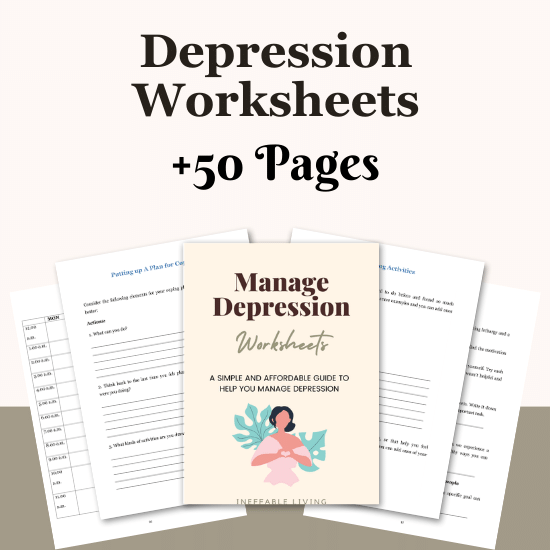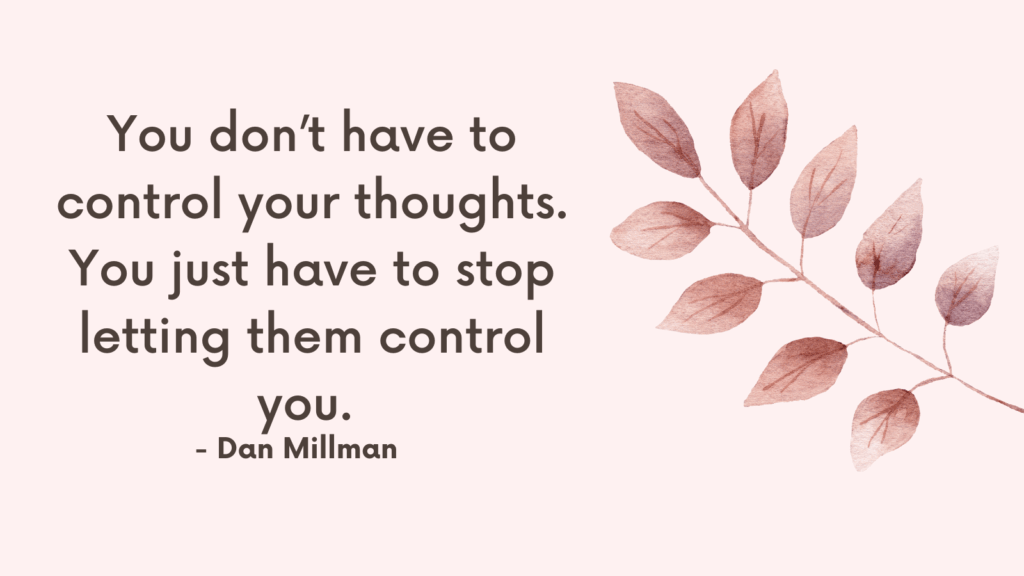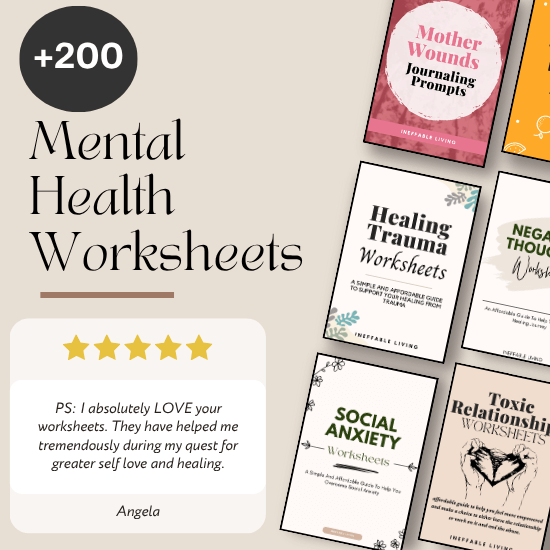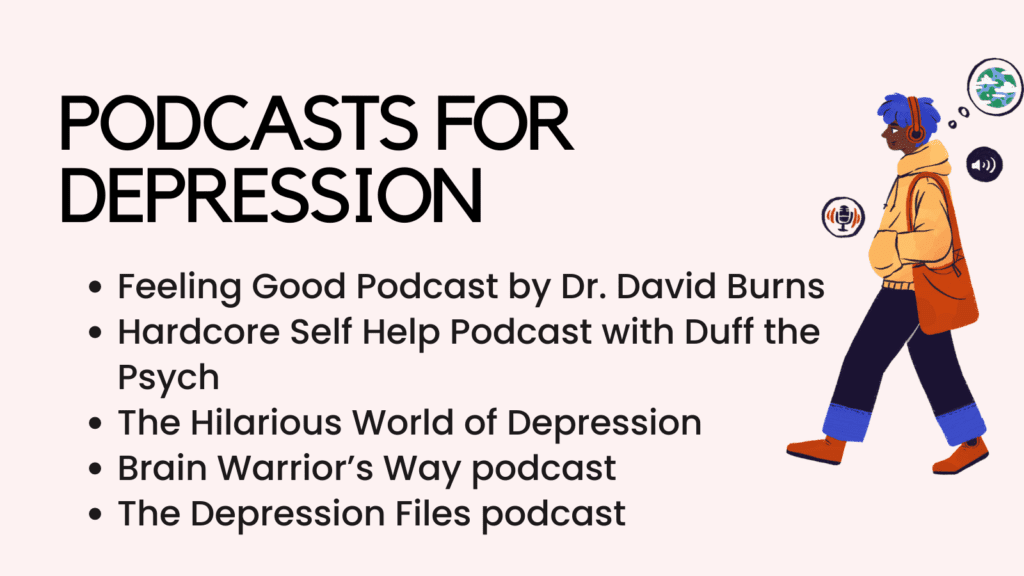When you’re living with depression, your environment can either drain you further—or gently support your healing. You don’t need a massive overhaul. Small, soft changes can create a space that feels safer, kinder, and easier to move through, even on your hardest days.
Why Your Environment Matters When You’re Depressed
1. It Affects Your Mood – Clutter, noise, or chaos can increase stress and make depression feel heavier, while calm, clean spaces can ease mental pressure.
2. It Shapes Your Behavior – A supportive, uplifting environment can encourage small positive actions, while a draining one can worsen isolation or inactivity.
3. It Impacts Your Energy – Natural light, fresh air, and quiet can boost your energy levels, while darkness and mess can drain them further.
4. It Influences Thought Patterns – Being surrounded by negativity, criticism, or constant stimulation can fuel negative thinking and increase emotional fatigue.
5. It Supports or Blocks Recovery – A safe, comforting environment can help you rest, heal, and take small steps forward. A toxic or overwhelming space can keep you stuck.
6. It Affects Sleep and Routine – Noise, clutter, or poor lighting can disrupt sleep and routines, which are crucial for managing depression.
Related: High Functioning Depression Test (+Effective 3-Step Guide To Overcome High Functioning Depression)
How to Make Your Environment Depression-Friendly?
1. Keep Essentials Within Arm’s Reach
Store water, snacks, tissues, and basic hygiene items near your bed or favorite sitting area. On low-energy days, this reduces barriers to care and encourages small wins.
2. Use Soft, Natural Light
Open blinds during the day or use warm, low-wattage lamps. Harsh lighting can be overstimulating; soft, natural light supports mood regulation and helps you feel grounded.
3. Create a “Low-Energy Corner”
Designate a chair, blanket, or space where you can just be without pressure. Add comforting items—like a favorite hoodie, a fidget object, or soft textures—to invite rest without guilt.
4. Remove Visual Clutter
A cluttered space can mirror mental overwhelm. Start small: clear one surface or put away just five items. Let visual calm slowly replace visual chaos.
Related: Top 10 Signs of Silent Depression
5. Use Soothing Scents
A lightly scented candle, diffuser, or essential oil (lavender, citrus, eucalyptus) can shift the energy of a room and signal comfort without needing any effort from you.
6. Add Something Alive
A low-maintenance plant, a bowl of fruit, or even fresh herbs in a jar can remind you that life continues, even in quiet moments. Greenery softens the room and the mood.
7. Keep Comfort Items Visible
Display a comforting book, photo, or object that brings you peace. Seeing it often can provide a visual anchor when your mind feels scattered or low.
8. Make One Space Feel Safe
You don’t need to fix the whole home. Focus on making one place—your bed, your couch, a window nook—feel as safe, clean, and soft as possible. Let that space become a retreat.
Related: The Silent Struggle: How to Manage Depression-Related Anger?
9. Minimize Decision Fatigue
Create a basket with “default” clothes or meals. On hard days, decision-making can feel impossible. Having pre-chosen items saves mental energy and lowers pressure.
10. Incorporate Gentle Sound
Play soft background music, ambient noise, or nature sounds. Soundscapes can shift your internal state without requiring focus, effort, or interaction.
11. Create a Morning Starter Kit
Place a water bottle, socks, a gentle face wipe, and a snack beside your bed. These small nudges can help you take the first steps into the day with less friction.
12. Keep Trash and Laundry Bins Accessible
If you’re too tired to tidy, make “toss zones” easy. Having bins in multiple rooms helps prevent buildup and gives you more flexibility on low-capacity days.
13. Choose Soft, Wearable Comfort
Leave your coziest clothes in easy reach. Depression often makes texture and tightness unbearable. Prioritize softness and comfort over style or expectations.
14. Use Color Wisely
Surround yourself with calming or comforting tones—soft blues, greens, warm neutrals. Even one cozy blanket or poster in your favorite color can help shift the tone of a space.
Long-Term Strategies for Managing Depression
Managing depression over the long term requires a compassionate, multi-layered approach. While immediate relief strategies are helpful, long-term healing focuses on building emotional resilience, regulating the nervous system, and creating sustainable life habits that support mental well-being.
1. Build a Consistent Routine
A predictable daily rhythm stabilizes mood and reduces decision fatigue.
- Wake up and go to bed around the same time each day.
- Anchor your day with 1–2 consistent activities (e.g., morning tea, evening walk).
Routines give structure when motivation is low.
Related: How To Ask For Help With Depression? Top 10 Tips
2. Prioritize Quality Sleep
Poor sleep can worsen depression and vice versa.
- Limit screens before bed.
- Create a calming bedtime ritual.
- Avoid caffeine late in the day.
Consistent sleep hygiene protects both brain chemistry and emotional regulation.
3. Nourish Your Body With Care
Nutrition plays a crucial role in brain health.
- Eat regularly, even if appetite is low.
- Include mood-supportive foods (e.g., omega-3s, leafy greens, nuts, whole grains).
- Stay hydrated.
Gentle, flexible eating habits can gradually improve energy and mood.
4. Move Your Body—In Any Way You Can
Movement helps regulate stress hormones and increase feel-good chemicals.
- Walk, stretch, dance, or do yoga—no need for intense workouts.
- Even 5–10 minutes a day makes a difference.
Movement is medicine when approached with kindness.
5. Develop Emotional Literacy
Learn to identify, name, and validate your emotions.
- Journaling, therapy, or mood tracking apps can help.
- Practice saying: “I feel ___ and that’s okay.”
This builds self-awareness and reduces emotional overwhelm.
6. Engage in Purposeful Connection
Isolation worsens depression. Seek meaningful, low-pressure connection.
- Stay in touch with one or two trusted people.
- Join support groups or online communities.
- Practice vulnerability slowly—start with presence, not deep disclosure.
7. Develop a Self-Compassion Practice
Self-blame fuels depression.
- Practice kind self-talk: “I’m doing my best today.”
- Treat yourself the way you’d treat a struggling friend.
- Let go of perfectionism in healing—it’s nonlinear and slow by nature.
Related: How to Manage Summer Depression?
8. Reduce Stress at the Source
Chronic stress fuels depressive symptoms.
- Set boundaries with toxic people or overwhelming commitments.
- Declutter your schedule and space.
- Choose rest without guilt.
9. Engage in Creative or Meaningful Activities
Depression can rob life of joy and meaning.
- Try writing, painting, gardening, or crafting—not for results, but for expression.
- Volunteer, mentor, or support a cause when you feel ready.
Purpose reconnects you to the bigger picture.
10. Track Patterns Over Time
Keep a mood journal to track triggers, improvements, and setbacks.
- Look for patterns in sleep, food, social contact, and emotional states.
- Use this information to adjust your strategies and recognize progress.
11. Set Gentle, Realistic Goals
Set small, flexible goals based on capacity, not pressure.
- Break goals into micro-steps.
- Celebrate effort, not just outcome.
This builds confidence and forward movement.
Related: Do I Have Seasonal Depression Quiz (+Top 12 Natural Ways To Boost Your Mood)

Conclusion
A depression-friendly space isn’t about perfection. It’s about quiet comfort, small access points to care, and making your surroundings softer than your inner storm.



